Birth of Venus by Botticelli: fun facts and interesting things to know
The Birth of Venus by Botticelli is the most famous painting on exhibit in the Uffizi Gallery, Florence. It is probably the most iconic work of art in the world! Its delicate beauty and complex symbolism continue to fascinate anyone who looks at it, even more than 5 centuries after it was made. Here are some interesting and fun facts about the Birth of Venus by Botticelli that you might not know!
You can find many pictures online, but seeing the Birth of Venus in person, at the Uffizi, is a totally different experience. You can spend the whole day indulging in the details of this large painting.
15 Fun facts about Botticelli’s Birth of Venus
I am a licensed tour guide of Florence:
- discover my private tour of the Uffizi gallery
- Learn my tips for visiting the Uffizi
- All Botticelli paintings in Florence
- Most important artworks at the Uffizi Gallery
There are so many things hidden behind that painting! Myths, symbols, stories and legends. But let’s start from the basics:
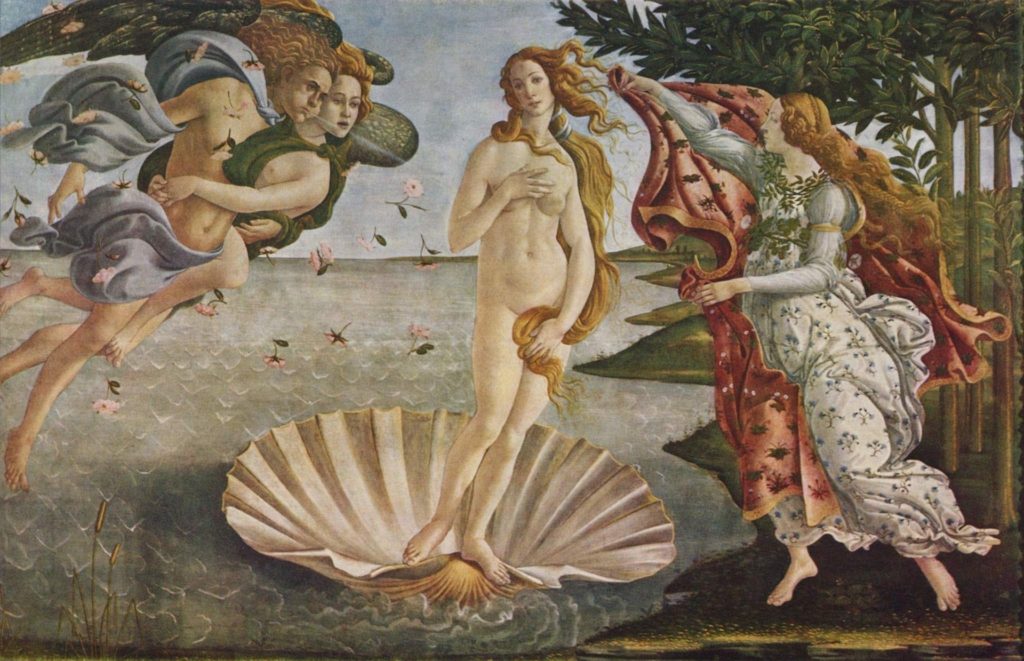
When, where and for whom it was made
The Birth of Venus was painted by Sandro Botticelli in Florence around 1485, and mentioned for the first time by Vasari in 1550, according to which it was located in the Medici Villa of Castello. So most likely the painting was commissioned by one of the Medici of Lorenzo the Magnificent’s generation, but we don’t know exactly which member of the family. It could be Lorenzo di Pierfrancesco, cousin of Lorenzo the Magnificent.
- Lorenzo the Magnificent: biography and facts
How large is the Birth of Venus by Botticelli?
The Birth of Venus is a very large painting! In fact it measures 1.72 meters x 2.78 meters (5.5 feet x 9.1 feet).
The Greek myth of the birth of Venus
According to the Greek myth Venus (which the Greeks would have called Aphrodite) was born from the foam of the sea, when Uranus, the god of the sky, was castrated and his genitals were thrown into the sea. After being born from the waters, Venus reached the Greek island of Cyprus.
The other characters
In addition to Venus, Botticelli represented other characters. On the left are Zephyr, aka the Wind, and a female figure who could be Aura (the breeze) or Chloris (the Earth nymph). On her right there’s another lady who is probably the Hora of spring. The Horai were 4 female figures who presided over the changing of the seasons.
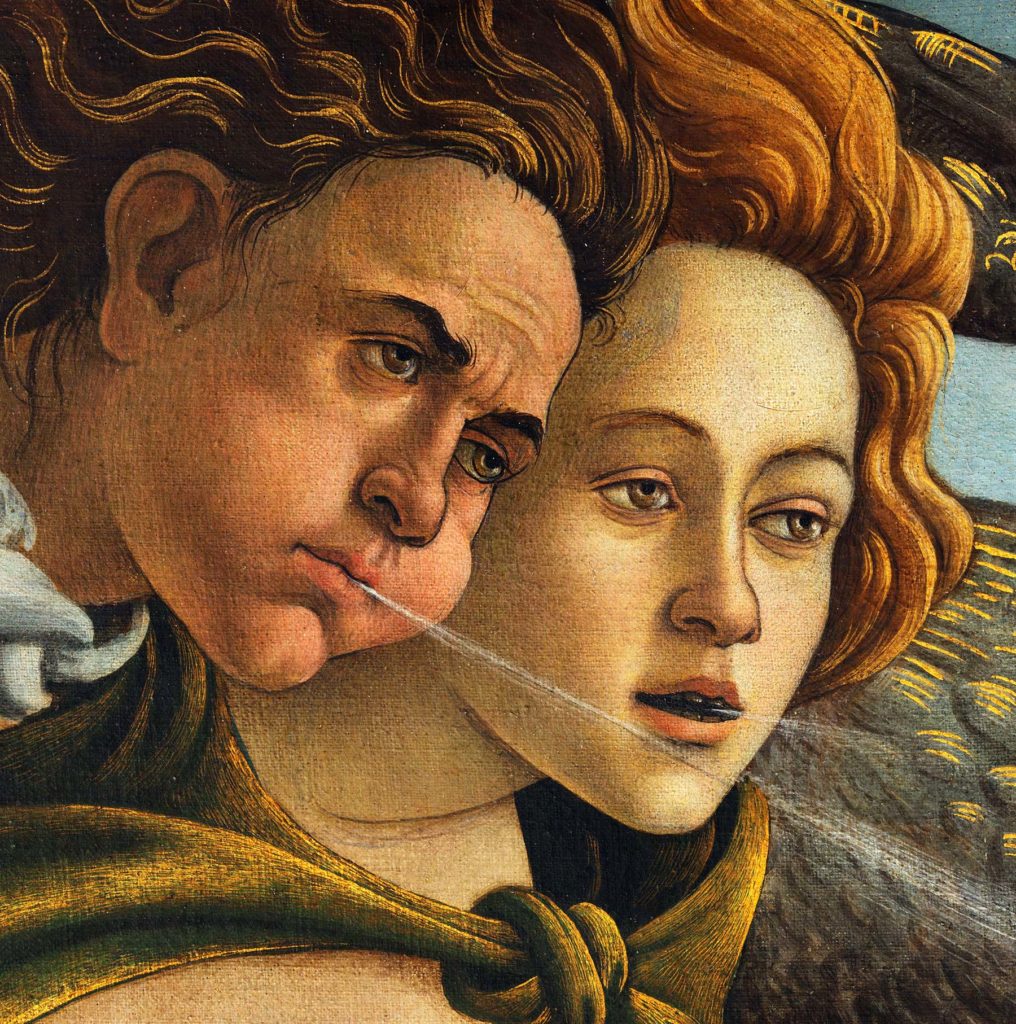
Who was the model for Botticelli’s Venus?
It is thought that the model used by Sandro Botticelli to depict Venus was Simonetta Vespucci. Simonetta was one of the most beautiful women in Florence, who was also the inspiring muse for the poems of Giuliano de ‘Medici, brother of Lorenzo the Magnificent. There are rumors about a possible love affair between Simonetta and Giuliano, but it is unlikely because Simonetta was married and very respectable. Other rumors say that Botticelli was in love with Simonetta.
The religious meaning of the Birth of Venus
The Birth of Venus is a highly symbolic work of art, and with many levels of interpretation. In addition to telling the Greek myth of the birth of the goddess, the painting also symbolizes the baptism: just as Venus is born from the waters, in the same way a Christian is reborn thanks to the waters of baptism.
The meaning of the shell
Venus stands on a large scallop shell, as if she was a perfect, beautiful pearl. But the shell, since the times of ancient Greece, has also been a symbol for female genitals, and it brings to mind the idea of birth. Over time, the shell has also become one of the symbols of the Virgin Mary.
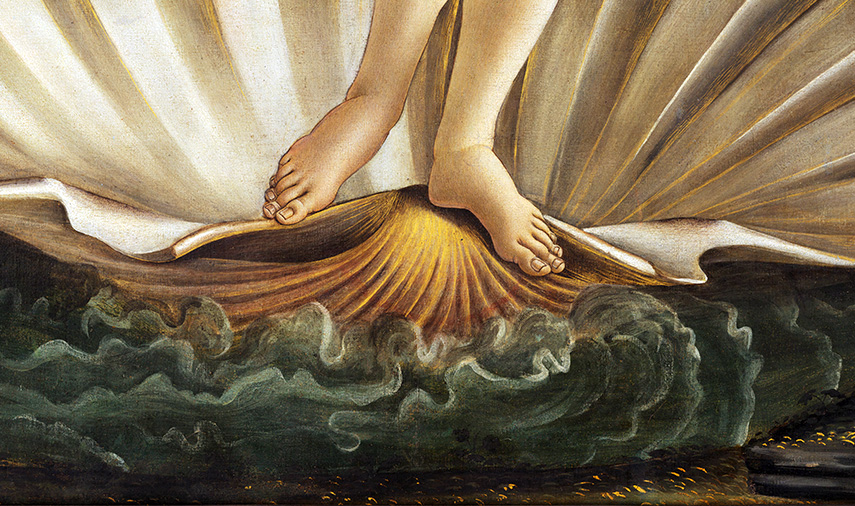
Inspired by a poem by Agnolo Poliziano
The subject of the painting was studied by the philosopher Agnolo Poliziano, who described the Birth of Venus in this way through the lines of one of his poems. Angolo Poliziano was part of the Neoplatonic academy, a group of Renaissance philosophers supported by Lorenzo the Magnificent, who had a great influence on the art and culture of the time.
Inspired by another famous Venus
The demure pose of Botticelli’s Venus is inspired by that of another famous Venus, which is also found in the Uffizi. It is the so-called Medici Venus, a Greek marble statue of the “pudic venus” type. Today it is exhibited inside the Uffizi Tribune. The Medici Venus was for centuries the most famous icon of female beauty, inspiration for many artists (including Botticelli himself).
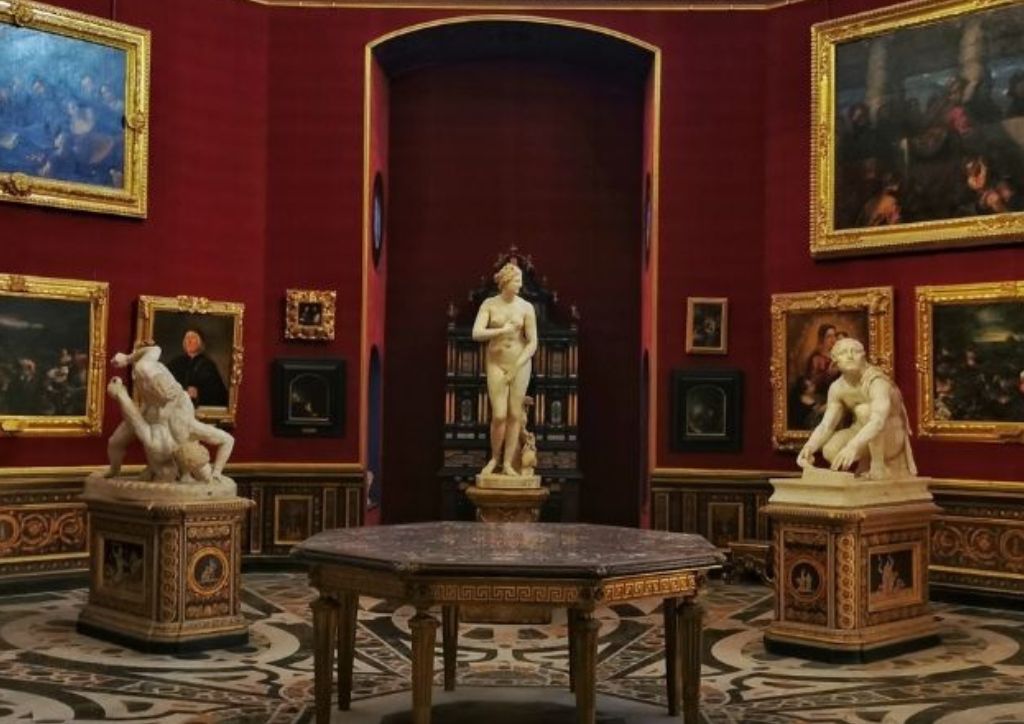
The nudity of Venus by Botticelli
Venus is naked not to be hotter, but because she is pure and innocent, she has nothing to hide. Naked bodies were not so common in Renaissance painting, and the only occasion on which they were depicted were scenes with Adam and Eve. The nakedness of Venus was therefore something unusual and never seen before.
Venus’ body proportions are wrong
There’s an important thing to know: Venus is beautiful but not perfect. If you look closely you will notice that her body has different proportions from those of real women. For example, her neck is too long, as is the arm holding her hair, while her shoulders are too narrow.
Plants, flowers and symbols
The painting is full of plants and flowers, and each botanical species has a precise symbolic meaning. For example, there is the myrtle, which is the plant generally associated with Venus. And then there are the primroses, the quintessential spring flower and a symbol of youth. We also find violets, a symbol of modesty and once used to prepare love potions. And then cornflowers, irises, jasmines, poppies …
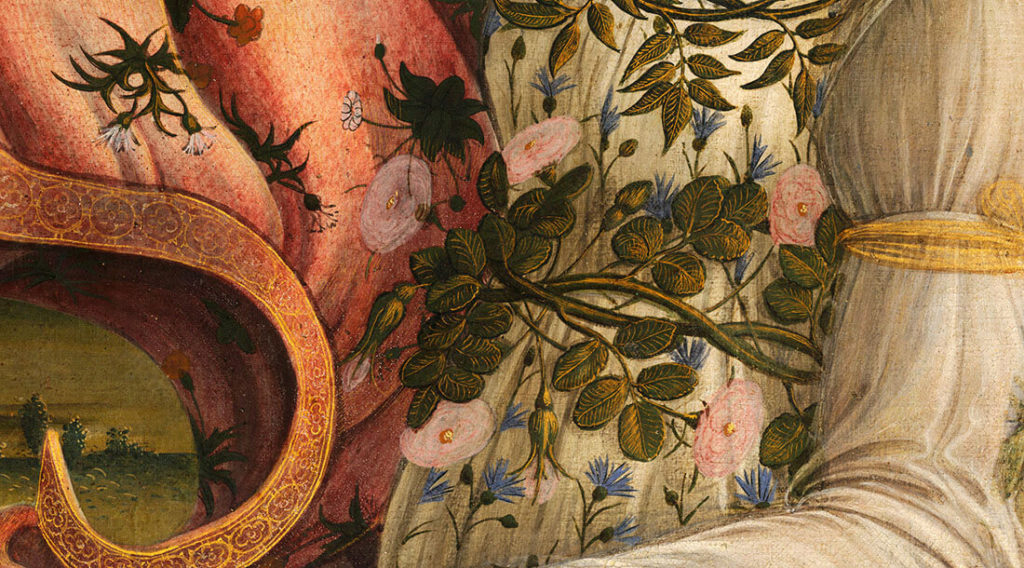
The twin painting of the Birth of Venus
In the same years Botticelli made another painting, very similar to the Birth of Venus. It is the Spring (Primavera) by Botticelli: this too has a mythological theme, and has the same large dimensions. The Primavera is located in the Uffizi room just before the one where Venus is exhibited.
The late fame of Venus and Botticelli
Botticelli has long been considered a minor artist of the Italian early Renaissance, overshadowed by the great names of the late Renaissance, such as Raphael, Leonardo and Michelangelo. It began to become popular only around the nineteenth century, and in a few decades his Venus became a famous icon all over the world.
Venus is always in your pocket
Venus by Botticelli is such an Italian icon that her face is also featured on Italian 10-cent euro coins!
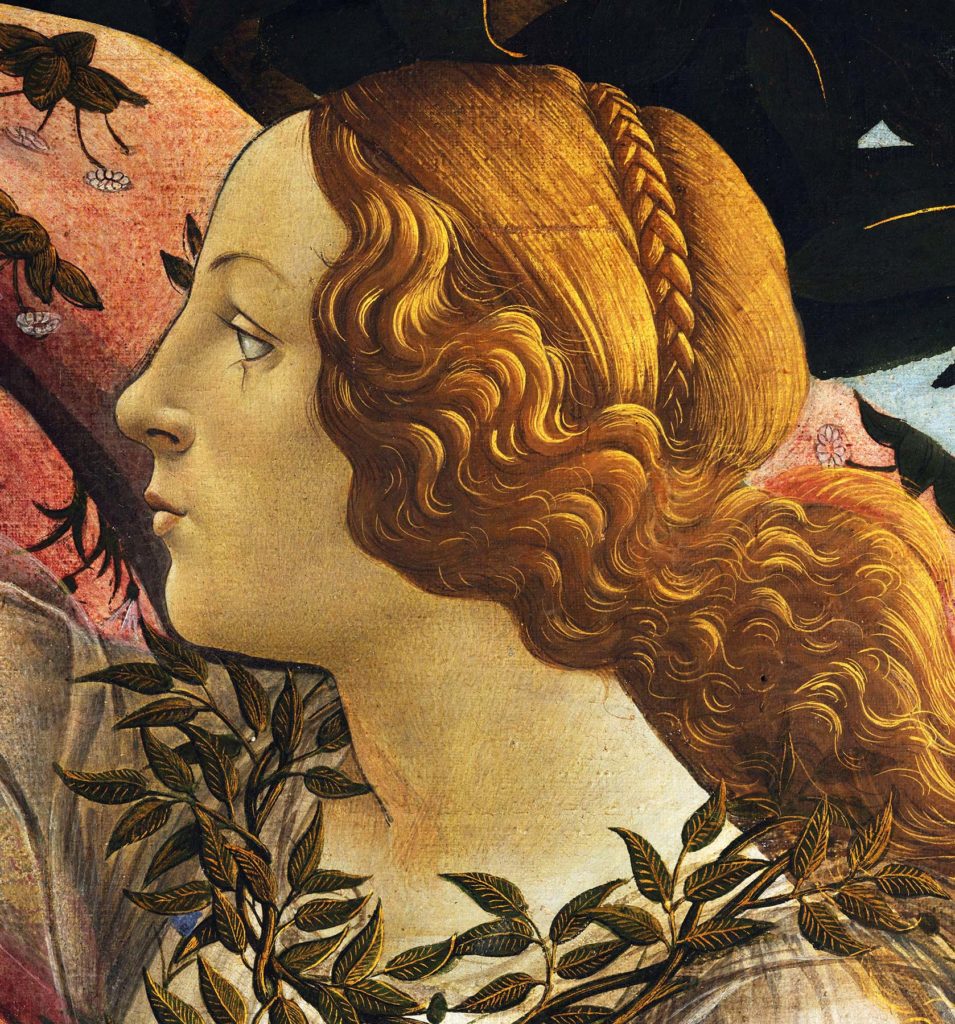
That’s all! I hope you found this post interesting and that you have learnt something new and unexpected! You have any question or if you know some other interesting and fun facts about the Birth of Venus by Botticelli just leave me a comment!
If you liked this post also read:
In my honest opinion I believe the two Dark Angels especially the male Dark Angel is blowing her hair away from her to see her nudity as the female Dark Angel is watching. However the honest woman is trying to cover up her with a cloak as the Dark Angels trying to show off her nudity. Meanwhile the goddess Venus is modest covering up her nudity with her hair and hand. I find it interesting how it is a rarity of a woman having two dimples in the back of her back that represents goddess of Venus. I find it ironic how one of my friends is a model in real life and her name is Angel and has two dimples on the back of her lower back and I got the pleasure and honor to get to know her as a person. Thank you for interpreting the botanical plants and flowers drifting to the goddess of Venus and how her stance is interpreted. Thank you Angel for being my friend love Thorn.